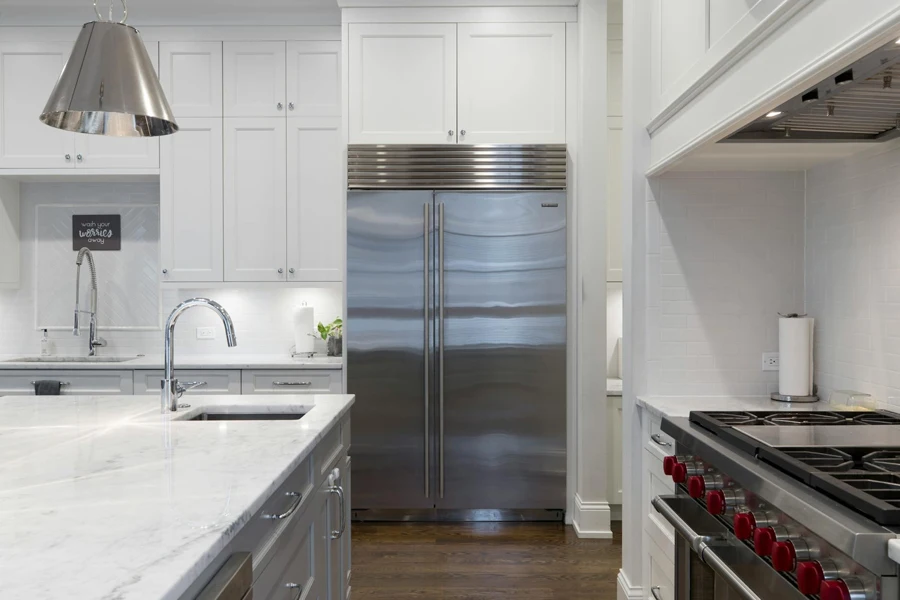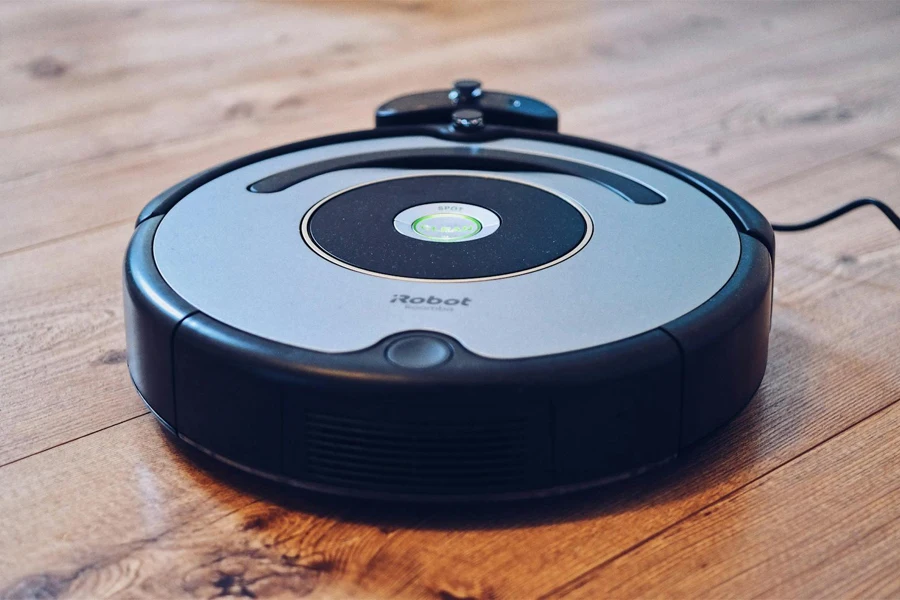Table of Contents
● Introduction
● Market overview
● Types of smart electronic products
● Conclusion
Introduction
Smart electronics are revolutionizing modern living by providing unparalleled convenience and efficiency. These advanced devices enable seamless control and automation, transforming homes into more connected and responsive environments. The market for smart electronics is experiencing significant growth, driven by technological advancements and increasing consumer demand. From smart refrigerators and microwaves to robot vacuums and lighting, these innovations are enhancing everyday life in profound ways. As the industry continues to evolve, smart electronics are set to become even more integral to daily routines, offering greater functionality and comfort.
Market overview

Market scale and growth
The global market for smart electronics was valued at USD 774.3 billion in 2023 and is projected to reach USD 1776.1 billion by 2036, growing at a compound annual growth rate (CAGR) of 7.16% over the forecast period. According to industry data, the global consumer electronics sector generated over USD 1000 billion in revenue in the first quarter of 2024. The market’s expansion is primarily driven by the proliferation of wireless connectivity options such as Wi-Fi and Bluetooth, which offer users enhanced convenience and mobility.
Regional insights
Regional analysis shows that the Asia Pacific region is expected to hold a significant share of the market, with a revenue share of over 34% by 2036. The rapid adoption of smart home devices in new residential constructions is a key driver in this region. In North America, tech giants like Google, Apple, and Amazon are leading innovations in automated home devices, contributing to the region’s substantial market share. In 2023, the North American market for electronics and smart devices was estimated at USD 113 billion, with significant growth anticipated as more households adopt smart technologies.
Key drivers
Several factors fuel the growth of the smart electronics market. The increasing demand for smart home devices is evident in the rising number of new residential buildings incorporating these technologies. Technological advancements and substantial consumer investment in innovative products also propel market growth. However, challenges such as privacy concerns and the high costs of smart devices remain significant barriers. Despite these challenges, the market continues to grow, driven by the ongoing innovation and consumer interest in smart living solutions.
Types of smart electronic products
Smart refrigerators
Smart refrigerators are revolutionizing kitchen management with advanced technology. Equipped with touch-screen interfaces, these refrigerators display recipes, create grocery lists, and notify users when food items are about to spoil. Internal cameras with high-resolution capabilities provide real-time inventory checks, allowing users to view the contents remotely via smartphone apps. Some models also feature energy-efficient compressors and advanced temperature control systems to maintain optimal freshness.

Smart microwaves
Smart microwaves enhance convenience with integrated voice control systems compatible with Amazon Alexa and Google Assistant. They offer precise cooking commands with built-in sensors that adjust cooking times and power levels based on the type and amount of food. Advanced models include inverter technology for consistent, even cooking and defrosting, and some feature Wi-Fi connectivity for remote operation.
Smart toasters
Smart toasters provide a highly customizable toasting experience. They feature multiple slots with independent controls, allowing for different toasting settings simultaneously. Advanced models include digital displays with touch controls, pre-set options for various bread types, and the ability to burn custom images onto the toast. Temperature and speed controls are fine-tuned with microchip technology for precision.
Digital air fryers
Digital air fryers utilize rapid air technology to cook food with up to 75% less fat than traditional frying methods. These multifunctional devices come with pre-set programs for frying, baking, roasting, and grilling. High-powered heating elements and fans ensure even cooking, while some models include dehydrating capabilities. Voice command integration allows for hands-free operation and real-time monitoring through companion apps.
Smart ovens
Smart ovens are designed with precision and versatility in mind. They sync with digital recipes to automatically adjust cooking times and temperatures. Features include steam cooking options for moisture retention, convection fans for even heat distribution, and self-cleaning modes with pyrolytic technology. High-end models come with Wi-Fi connectivity, allowing for remote monitoring and control.

Wi-Fi pressure cookers
Wi-Fi pressure cookers combine multiple cooking functions into one device, capable of pressure cooking, slow cooking, rice cooking, and more. They feature advanced microprocessors that adjust heat, pressure, and time settings to deliver consistent results. Remote control capabilities via Wi-Fi enable users to manage cooking from their smartphones, with voice command functionality for added convenience.
Automatic coffee makers
Automatic coffee makers are equipped with programmable settings for customizable brewing. They include features like built-in grinders for fresh coffee grounds, milk frothers for specialty drinks, and thermal carafes to keep coffee hot. Advanced models offer touch-screen interfaces, app connectivity for remote operation, and precision temperature control to optimize brewing conditions.

Water-saving dishwashers
Water-saving dishwashers incorporate advanced sensors that detect load size and soil levels to optimize water and energy usage. They feature multiple wash cycles, including eco-friendly options and high-temperature sanitization. Remote start capabilities and smart diagnostics via connected apps allow users to manage and troubleshoot the appliance from their smartphones.
Robot vacuums
Robot vacuums utilize LIDAR and camera-based navigation systems to map home layouts accurately and avoid obstacles. They come with powerful suction motors and HEPA filters for efficient cleaning. Customizable cleaning zones and schedules can be set through mobile apps, and some models feature automatic dirt disposal and mopping capabilities.

Smart lighting
Smart lighting systems offer advanced features such as tunable white and color-changing LEDs, which can be controlled remotely via smartphone apps. They integrate with home automation systems and voice assistants for seamless control. Advanced scheduling, geo-fencing capabilities, and energy usage monitoring enhance the user experience and promote energy efficiency.
Conclusion

Smart electronics are ushering in a new era of home automation, significantly enhancing convenience, security, and efficiency for users worldwide. With advanced features and seamless integration, these devices are transforming everyday routines and setting new standards for modern living. The rapid growth and innovation in this market highlight the increasing adoption and reliance on smart technology in residential spaces. As technology continues to evolve, smart electronics will undoubtedly play a pivotal role in shaping the future of home automation.




